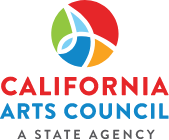SMU DataArts, the National Center for Arts Research, is pleased to provide the 2019 Arts Vibrancy Index Report. Like its four predecessors, this year’s edition draws upon a set of data-informed indices to identify arts-vibrant communities across the U.S.
Arts and cultural organizations exist where people live throughout the nation, serving communities both poor and affluent, rural and urban. Their ubiquity is a testament to the human need for creativity and desire to engage with artistic expression. In 2018, arts activity in every U.S. Congressional District in the country benefitted from federal funding from the National Endowment for the Arts.
Arts and cultural organizations are engines of community development and community cohesion. The arts provide culturally infused experiences that are consumed in an open, social setting, which is ideal for engendering social integration in a diverse marketplace. The current climate of political, sociocultural, and economic polarization makes it more important than ever to recognize and celebrate the essential role that arts and culture play in making communities throughout the country not only more vibrant places to live and visit but also more unified, safe, and tolerant.
All cities can learn from each other’s strengths. In this report, we highlight and celebrate communities big and small, located in every region, that have cultivated higher levels of arts activity per person living in the community. We use the term “vibrancy” in keeping with Merriam-Webster’s definition of the word to mean “pulsating with life, vigor, or activity.”
Rather than base the list on popular vote or on our own opinion about locations, we take an empirical approach to assessing a variety of characteristics that make up a community’s arts vibrancy. Our method involves measuring community traits, such as the number of nonprofit arts and cultural organizations per capita. Although this may appear to some like a counting exercise, there is more to it. All else being equal, more arts and cultural organizations in a community translates to more availability of arts experiences for people to engage within that community. It also means more variety. A community with 50 arts organizations most likely has a greater range of options than a community of comparable size with only five organizations, so a greater diversity of interests, preferences, and cultural expressions can be met. This is just one example of the 12 measures we use.

